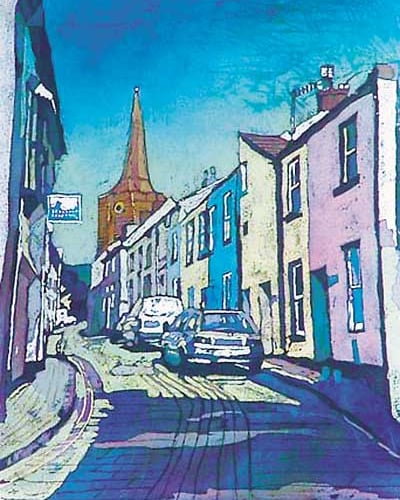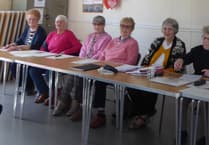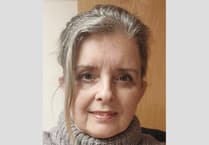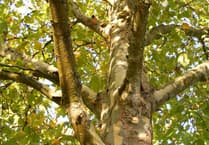Batik, a method of patterning cloth with wax and dye, goes back thousands of years. The earliest remnants of wax-resist cloth found in China were dated from AD581-618 and Japanese batik screens were dated from AD710-794. The practice spread from Asia to the Malayan archipelago and then to the Middle East via the caravan route. When Dutch colonisers brought batik cloth to Europe it started a wave of interest in the West with art schools in Europe and the USA exploring the technique and producing textiles for use and wear. This interest reached a peak in the 1920s and again in the 1960s. Batik as a fine art form started at that time in the West and spread worldwide, including back to countries like Java best known for continuing traditional production for use as head and body wraps, saris, carrying cloths and bags, household textiles and religious and ceremonial garments. Contemporary batik art uses the same basic techniques as the traditional makers but with variations: molten wax is applied with a tool to areas of cloth, cold dye is applied to the cloth by brushing or dipping and the dye will 'take' on the unwaxed areas and 'resist' the waxed parts. Boiling or ironing the cloth will remove the wax and reveal the image, with successive applications of wax and dye refining it and adding complexity of detail and texture. Many different fabrics may be used and wax may be applied with a variety of tools including the traditional 'canting' (a kind of pen with a reservoir for molten wax) or 'cap' (a copper stamp for repeating patterns). The Batik Guild, formed in 1986 in London to promote batik as an accessible creative art process, quickly grew and by the mid-90s had forged international links through conferences and exhibitions. To celebrate its 20th anniversary, the guild presented a comprehensive exhibition, showcasing the best contemporary work along with a selection of traditional batiks to provide the historical perspective, touring to six venues throughout England in 2006-7. Representing the Welsh area of the guild, four members have brought a selection of their original work to Tenby's Art Matters Gallery this month. Rhona Tooze, an artist and teacher from Swansea, who has taught batik throughout South Wales to all ages over the years and now teaches adults for Swansea University, came especially to Tenby for inspiration. She has produced a series of street scenes, strong painterly work with delicate detail and subtle colour variations. Another large piece, depicting a predominantly masculine sport in this predominantly feminine craft, features action from the Grand Slam, Wales versus England rugby, and a smaller work shows surfers. Pom Stanley, an artist and art therapist from North Wales, with wide teaching experience related to textile production and embellishment, brings painterly images of Celtic musicians, flautists and fiddlers playing in Welsh and Irish bars. The work begins in the social atmosphere, a very lively place to sketch in contrast to the quieter more solitary space of the studio where the work is completed. Wendy Evans, of St. Dogmaels, exhibits widely in Wales and tutors batik workshops in schools, colleges and community groups. Wendy's inspiration is drawn from her surroundings, especially the hills of Preseli, Carn Llidi and the county's distinctive landscape. Dorothy Morris, area representative for the guild and tutor of the medium, shows both figurative and abstract work as well as quilts, hangings, bags and some quirky 3D pieces. In 2002, she won second place in Tenby Art Festival's competition with work based on Pembroke. Together the four artists have produced a hugely varied exhibition showing both the versatility of the medium as well as their personal artistic skill: framed 'paintings', wall hangings, 3D and practical textiles will be shown, and some reproductions and cards will also be available. The Welsh Batik Guild: Selected Work exhibition starts tomorrow (Saturday) at Art Matters Gallery in South Parade, Tenby (next to the Fire Station). Readers are invited to meet the artists tomorrow afternoon from 2 to 4 pm when there will be a demonstration of batik techniques. The gallery is open from 10 am to 5 pm everyday except Wednesday, and everyone is welcome. For further information telephone (01834) 843375 or view the exhibition on the website http://www.artmatters.org.uk">www.artmatters.org.uk.

Cresswell Street, Tenby by Rhona Tooze.



